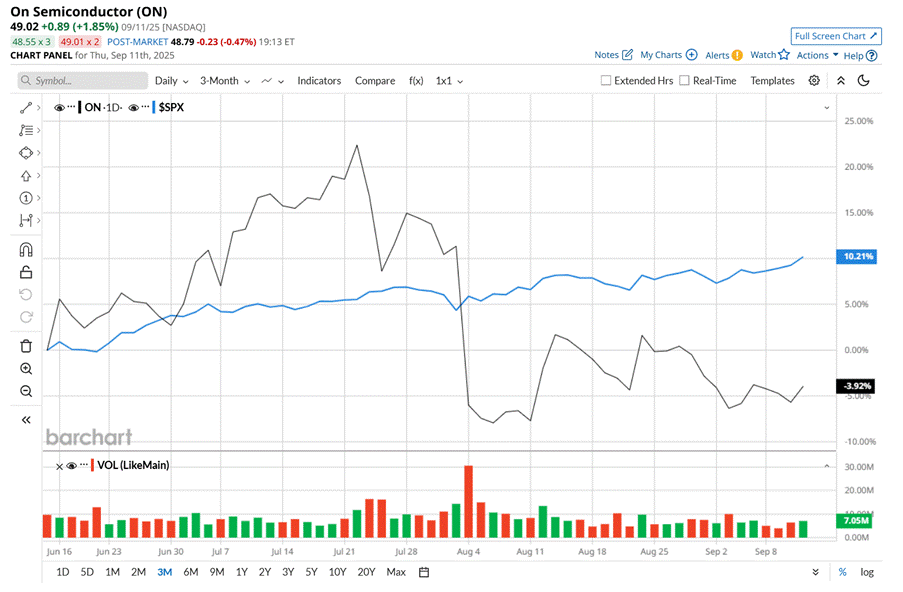/ON%20Semiconductor%20Corp_%20sign%20in%20Silicon%20Valley-by%20Sundry%20Photography%20via%20Shutterstock.jpg)
Scottsdale, Arizona-based ON Semiconductor Corporation (ON) provides intelligent sensing and power solutions. Valued at a market cap of $20 billion, the company designs and manufactures semiconductors that improve energy efficiency, power management, and sensing capabilities across industries, including automotive, industrial, communications, computing, and consumer electronics.
Companies valued at $10 billion or more are typically classified as “large-cap stocks,” and ON fits the label perfectly, with its market cap exceeding this threshold, underscoring its size, influence, and dominance within the semiconductors industry. The company’s specialty lies in power management, energy-efficient semiconductors, and advanced sensing technologies, which make it a key enabler of innovations in EVs, autonomous driving, and innovative energy solutions.
Despite its notable strength, this semiconductor company has slipped 35.6% from its 52-week high of $76.06, reached on Oct. 30, 2024. Moreover, shares of ON have declined 5.3% over the past three months, considerably underperforming the S&P 500 Index’s ($SPX) 9.4% return during the same time frame.

In the longer term, ON has fallen 30.6% over the past 52 weeks, significantly lagging behind SPX's 18.6% uptick over the same time period. Moreover, on a YTD basis, shares of ON are down 22.3%, compared to SPX’s 12% surge.
To confirm its bearish trend, ON has been trading below its 200-day moving average over the past year, with slight fluctuations, and has remained below its 50-day moving average since early August.

On Aug. 4, shares of ON tumbled 15.6% after its mixed Q2 earnings release. While the company’s revenue of $1.5 billion surpassed the consensus estimates by 1.4%, its adjusted EPS of $0.53 declined by a notable 44.8% from the year-ago quarter and missed analyst expectations by a penny. Moreover, its top-line also fell 15.4% from the same period last year due to lower sales across all its business segments. This bottom-line miss, combined with year-over-year declines, might have weighed on investor sentiment.
ON has also lagged behind its rival, Texas Instruments Incorporated (TXN), which declined 8.9% over the past 52 weeks and 1.7% on a YTD basis.
Despite ON’s recent underperformance, analysts remain moderately optimistic about its prospects. The stock has a consensus rating of "Moderate Buy” from the 33 analysts covering it, and the mean price target of $57.71 suggests a 17.7% premium to its current price levels.
On the date of publication, Neharika Jain did not have (either directly or indirectly) positions in any of the securities mentioned in this article. All information and data in this article is solely for informational purposes. For more information please view the Barchart Disclosure Policy here.






